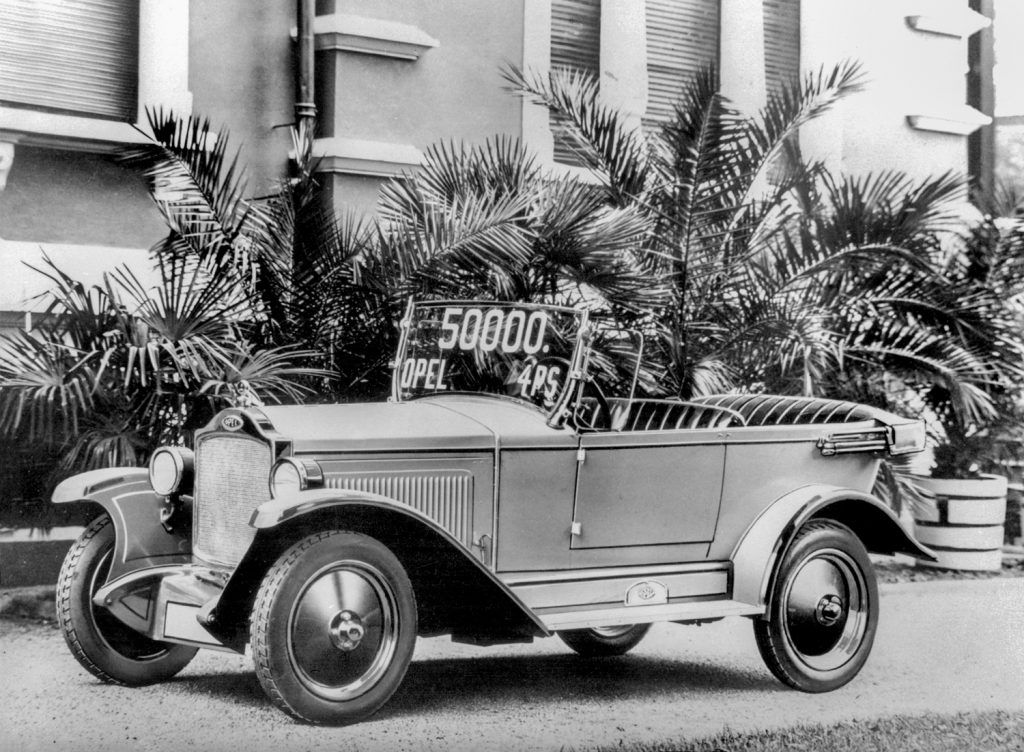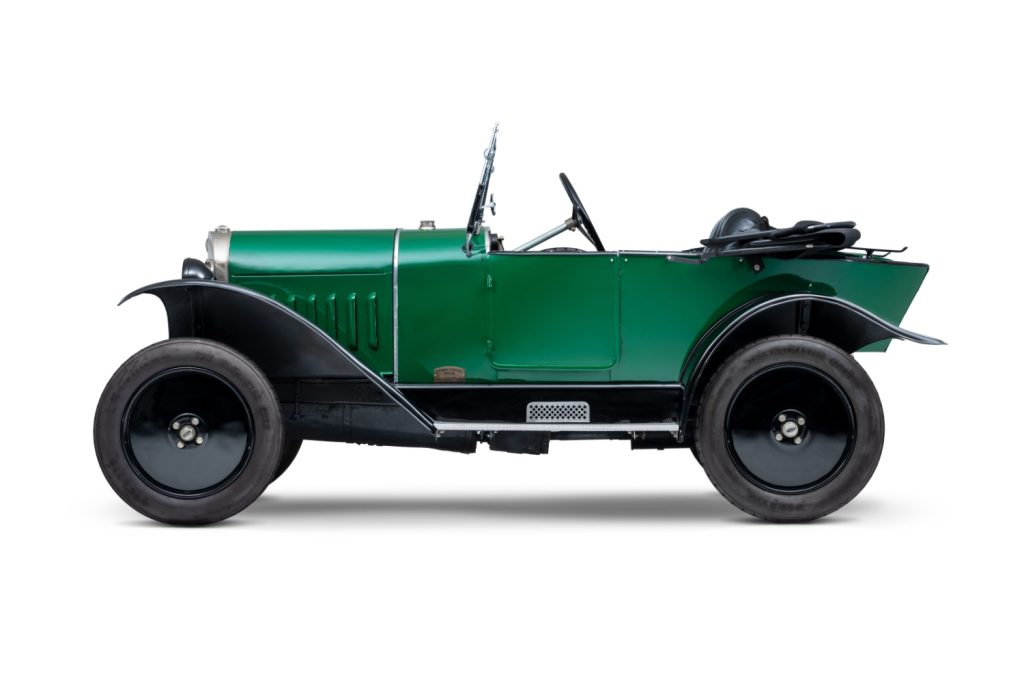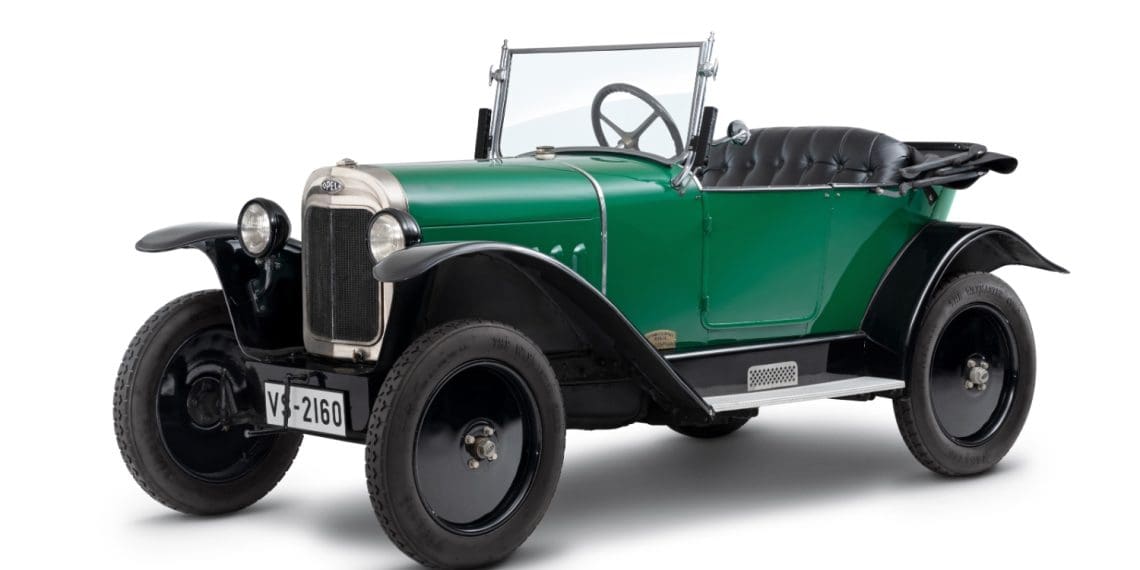



The Opel was advertised at the time as the “car for everyone”, as it had a price of 4500 Rentenmark at the beginning of production, little compared to other vehicles, but still as expensive as a private house.

It later became the “Volks”-Opel (Opel for everyone) because its selling price decreased from year to year, thanks to the continuous development of assembly line technology.
Assembly line production reduced production times to minimum values, and Opel hoped to achieve a daily production of 25 vehicles in the spring of 1924, by the end of the year 100 cars were already being produced and, just a few months later, 125 units of the “Laubfrosch” were coming off the production lines every day.

Thus, in 1930, the Opel 4/20 PS was available as a simple two-seater vehicle for only 1990 Reichsmark. With over 100,000 units produced by then, it had already established itself as an ideal and affordable car for professionals such as regional doctors, architects, and sales representatives, making the model a milestone for the German automotive industry.










